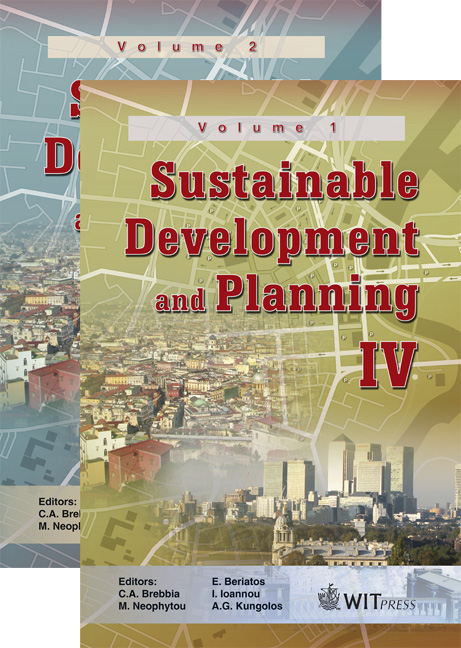Development Of Ecosystem Health Indicators For A Municipality In Southern Ontario, Canada
Price
Free (open access)
Transaction
Volume
120
Pages
11
Page Range
623 - 633
Published
2009
Size
630 kb
Paper DOI
10.2495/SDP090582
Copyright
WIT Press
Author(s)
H. Shear, S. Da Silva & C. Toth
Abstract
In December 2005, an Environmental Strategic Plan (ESP) was adopted by the Town of Oakville Council. A priority for action in the ESP was the development of a set of environmental health indicators by which to measure the state of Oakville’s environment. These indicators will form the basis of a regular \“State of the Environment” report for Oakville. The scope of the ESP is broad, in that it encompasses natural resources (biodiversity), waste management, transportation, heritage issues, safety, economic development, and human health and wellbeing. While the ESP is not a sustainability plan per se, it will be integrated, along with other Town master plans, into a Town sustainability plan. The indicators for the ESP would comprise part of the indicator suite within an overall sustainability model. This paper describes the process that the Town of Oakville undertook to develop a first set of environmental health indicators. Keywords: indicators, municipality, state of environment, reporting, Oakville. 1 Introduction The Town of Oakville is a community of approximately 165,000 on the north shore of Lake Ontario (Figure 1). In early 2003, the Town of Oakville made a commitment to develop an Environmental Strategic Plan (ESP). The Town and its citizens were clear that the ESP should develop a vision, outline goals, and establish measurable targets and the means to achieve environmental protection and improvements throughout the entire geographic area of Oakville. The development of the Plan was an opportunity for residents, commercial interests, industry, community associations, educators and other community groups to
Keywords
indicators, municipality, state of environment, reporting, Oakville.





